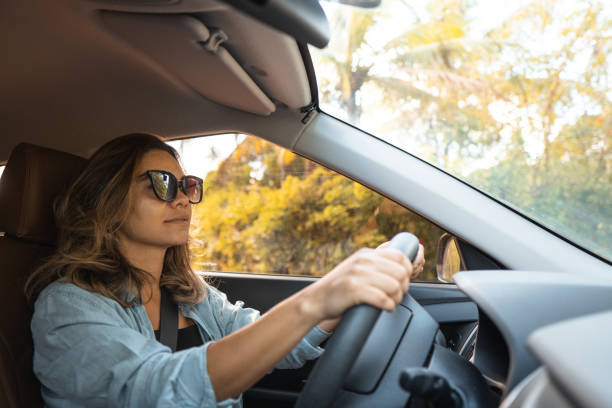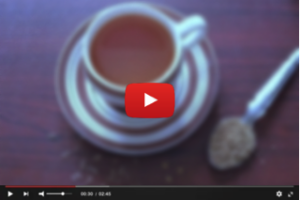There’s an easy way to restore your kidneys’ “signaling molecule” by using something called ‘Nectar of Gods’.
Blood Pressure, Driver Fitness and Safe Driving

In some crash reports, we are informed that the driver lost control of his vehicle after suffering “a medical episode”. This most often includes having suffered a heart attack, stroke, fainting etc.
In this section, we would like to investigate how blood pressure impacts on driver fitness and why maintaining a healthy blood pressure is important for safe driving.
Blood Pressure Medication and Driver Fitness
It is generally accepted that while high blood pressure can lead to heart attacks and strokes, low blood pressure can cause dizziness, blurred vision and confusion. All of these are dangerous conditions when the focus is needed in dangerous activities such as driving a motor vehicle. There is medication available to treat both high and low blood pressure. Drivers who are aware of their abnormal blood pressure and who are using prescription medication should always be alert to the side effects of medication.What is Blood Pressure and what would be a Healthy Blood Pressure?
Blood pressure is the pressure of the blood in your arteries. Blood is carried from the heart to all parts of the body in blood vessels. Each time the heart beats, it pumps blood into the vessels/arteries. The pressure of blood flowing through the arteries varies at different times in the heartbeat cycle. You need a certain amount of pressure to keep the blood flowing. Your heart is a pump that beats by contracting and then relaxing.- The highest pressure, known as systolic pressure, is the pressure when the beat or contraction of your heart forces blood around your body.
- The lowest pressure, called diastolic pressure, is the pressure between heartbeats when the heart is resting.
What do we know about High Blood Pressure/ Hypertension?
Hypertension, also known as high or raised blood pressure, is a condition in which the blood vessels have persistently raised pressure. The higher the pressure in blood vessels the harder the heart has to work in order to pump blood. People with high blood pressure run a higher risk of having a stroke or a heart attack.Risk factors for the development of hypertension/ high blood pressure:
- Consumption of food containing too much salt and fat, and not eating enough fruit and vegetables
- Harmful levels of alcohol use
- Being overweight
- Physical inactivity and lack of exercise
- Poor stress management.
- Genes are another factor. So, if one or both of your parents have (or had) hypertension, you have a greater chance of developing it too.
How can we prevent or minimize odds of developing high blood pressure and its adverse consequences?
- Healthy diet
- Avoid harmful use of alcohol
- Regular physical activity
- Maintaining a normal body weight
- Stopping tobacco use and exposure to tobacco products
- Proper management of stress
- Monitoring blood pressure at home if feasible
- Checking blood sugar, blood cholesterol and urine albumin
- Knowing how to assess cardiovascular risk using a risk assessment tool
- Following medical advice
- Regularly taking any prescribed medications for lowering blood pressure.
What do we know about Low Blood Pressure/ Hypotension?
Low blood pressure - also known as hypotension - is when your blood pressure is below 90/60mmHg. This does not necessarily mean that there is a problem. In fact, people with low blood pressure generally tend to live longer than those with high blood pressure and even those with normal blood pressure.Symptoms may however include:
- Low blood pressure can cause dizziness, blurred vision and confusion.
- The onset of dizziness can occur quickly, especially when standing suddenly. The resulting dizziness could result in a fall that could injure you. Also, fainting is a danger of low blood pressure. Fainting can result in serious bodily harm, resulting from a fall when going unconscious.
- Shock occurs when there is not enough blood reaching major organs, including the brain. The early signs of shock are lightheadedness, confusion and sleepiness. As the condition progresses, it will be difficult to sit up and not pass out. Shock can be fatal and should be treated immediately.
Low blood pressure could be an indicator of a more serious problem. Causes may include
- Blood loss
- Severe infection/sepsis
- Severe dehydration from vomiting, diarrhea or fever
- Heat exhaustion or heat stroke
- Heart problems such as heart attack or heart disease
- Heart failure and faulty heart valves
- Severe allergic reaction
- Endocrine problems such as overactive or underactive thyroid
- Addison's disease
- Low blood sugar
- Diabetes
- Liver disease
- A severe allergic reaction, called anaphylaxis
Low blood pressure is sometimes associated with certain symptoms, many of which are related to causes rather than effects of hypotension:
- Chest pain
- Shortness of breath
- Irregular heartbeat
- Fever higher than 38.3°C (101°F)
- A headache
- Stiff neck
- Severe upper back pain
- A cough with phlegm
- Prolonged diarrhea or vomiting
- Dyspepsia (indigestion)
- Dysuria (painful urination)
- An adverse effect of medications
- Acute, life-threatening allergic reaction
- Seizures
- Loss of consciousness
- Profound fatigue
- Temporary blurring or loss of vision
- Connective tissue disorder Ehlers-Danlos Syndrome
- Black tarry stools
How to manage low blood pressure
In most people, there is usually no need to treat low blood pressure. Only a very small number of people need to take medication for it. Steps to managing low blood pressure would include:- Making sure you are drinking enough fluids. This is especially important if you become sick or have diarrhea, as these can both lead to an increased fluid loss in the body.
- If you get postural hypotension, there are certain things you can do to avoid the problem - such as getting out of bed slowly in the morning and using handrails to support yourself when you get out of the bath.
Blood Pressure and your Ability to Drive
High blood pressure has few symptoms and it should not affect your ability to drive. However, you should not drive if your medicines cause symptoms which affect your driving ability. If this happens, ask your doctor if he or she can change your medicines to prevent the symptoms. If you have high blood pressure then you should be able to drive a car or a motorcycle for personal use with no problem. There are however important considerations for professional drivers in many countries across the globe. The medical standards for driving buses and large trucks and buses are much higher than for those driving a car or motorcycle. This is because the vehicles are much larger and heavier and because you may spend much more time behind the wheel, especially if driving is part of your job. If you have a license to drive a large goods vehicle or passenger-carrying vehicle you will need to inform the traffic authorities if your blood pressure and medicines cause side-effects (problems) that could interfere with your ability to drive. You may need to stop driving, find a different medicine and apply to renew your licence once your high blood pressure is under control. For example, beta-blocker medicines may cause you to feel dizzy or tired and if this happens to you, you may not be able to drive and, with your doctor's help, you will need to find another medicine. If your resting blood pressure is consistently 180mmHg systolic (top or maximum number) or more and/or 100mmHg diastolic (bottom or minimum number) or more then you should not drive a bus or large lorry. The good news is that once your blood pressure has been lowered and is under control, you can then be re-licensed.Blood pressure and Car Insurance
Not only does the licensed driver have to disclose any hypertension or blackouts to the licensing authorities - the driver should also need to consider the vehicle insurance contract. A history of hypertension or blackouts will be deemed a material fact. If after an accident it appears that there has been a prior history of blackouts or hypertension that has not been disclosed such failure to disclose may be regarded as a breach of contract.Conclusion
Driver error is blamed for approximately 85% of fatal road crashes in South Africa. The healthier the driver the better he/she will be equipped to remain focused, alert and able to reduce these driver errors or the threat of suffering “a medical episode”.Frequently Asked Questions
Hours sitting behind the wheel and eating meals on the fly can result in high blood pressure, which is a condition that affects both the health and well-being of many truckers and their ability to drive. However, blood pressure is manageable.
They require the systolic pressure (top reading) to be Less than 180. Furthermore, the diastolic (bottom reading) needs to be less than 100 also. The DVLA form does ask is it consistently higher than 180/100.
Blood pressure and Car InsuranceBlood Pressure and your Ability to DriveBlood Pressure Medication and Driver FitnessCauses of Low Blood Pressuredriving and blood pressurehealthy blood pressurehigh blood pressure (hypertension)how to prevent hypertensionLow Blood Pressure/ Hypotensionmanaging low blood pressureRisk factors for the development of hypertensionSigns and Symptoms of Low Blood Pressure













